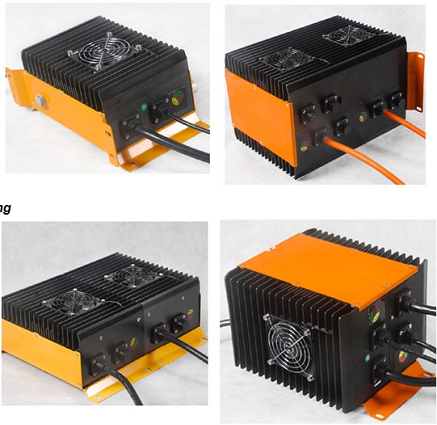The main advantage of the in-car charger is that it uses off-the-shelf AC power, which can be plugged into any one of the billions of outlets installed in every building through a single wire.
Level 1 AC charging uses single-phase power, 120V power supply is about 1.9KW, 220V-240V power supply is about 3.7KW. This is the most common way of charging in private homes.
However, companies typically use a three-phase power source for charging, which can increase the available power of on-board chargers to about 20kW, much faster than the first phase of charging.
AC charging is the most flexible way to charge, as the charging station can provide a full range of charging needs based on the user’s lifestyle and vehicle usage. If the vehicle is only used for commuting during the day, charging at night is very convenient. AC charging is not ideal for extended charging because the charging time is too long and the distance required exceeds the vehicle’s range.
Passive components for car chargers
Passive devices such as magnetic elements and capacitors play a key role in all aspects of on-board chargers. The boost converter that forms the front end of the PFC stage will consist of a common-mode EMC filter, filter capacitors, PFC coils, and a DC link capacitor that provides charging storage between the boost stage and the on-board charger.
LLC converters are widely used in industrial and consumer applications. Although no specific output choke is used, magnetic elements are used to isolate transformers and output EMC filters, as well as various capacitors.
The potential for adopting wireless charging has led to a broader need for passive components, including coils for power transmission (sending and receiving), as shown on the right, and proximity detectors to ensure the vehicle is properly aligned with the charger.
Although many recent advances have focused on power electronics semiconductor devices such as MOSFET and IGBT and their associated controls, few of these devices have been able to realize their potential in passive components without corresponding improvements in their dependent performance as well as connectors and cables.
In many applications, multiple resistors are simply used in parallel to handle the required power loss. While this provides a solution at the circuit level, it increases the number of components, the cost, and the required board space — none of which is ideal in an automotive environment. A recent innovation was the first high-power resistor offered with the AEC-Q200 qualification (left). These 1% tolerance devices are provided in an insulated package design to be mounted directly to the radiator, where they are rated up to 800W. This high power dissipation allows multiple low-power devices to be replaced by a single resistor, or (due to its pulse capacity) a larger wire-wound resistor can be replaced, saving board space.
An inductor is a component that, if not carefully selected, may be damaged by prolonged exposure to heat and vibration. However, the rugged model meets AEC-Q200 standards, such as metal composite power choke boost and buck run and filter. The latest versions offer high vibration resistance and are capable of operating at temperatures up to 150°C (including self-heating), while maintaining excellent inductance stability over this extended temperature range. The shielding structure virtually eliminates magnetic leakage, thus minimizing any electromagnetic interference problems.
EV on-board charger supplier
DCNE on-board charger is mainly used for hybrid vehicles, pure electric vehicles, electric buses, electric logistics vehicles and other new energy vehicles, and is suitable for charging lithium iron phosphate, lithium manganese acid, lead acid and other vehicle power batteries. Start your EV charging station businesses with DCNE.
For a no-obligation quote latest price of on-board charger or technical support, please contact us and fill in your details, and we’ll get back to you within 24 hours.
Post time: Jun-16-2021

